A short train away from Freiburg, you can familiarize yourself with some of the area’s charms in a brief and very easy walk
There is, of course, no law that says every hiking trip to the Black Forest must include at least one stage of the Westweg.
There is, however, a nagging feeling that without such a stage, your trip would seem strangely incomplete, in the same way that a trip to Paris only feels consummated after you have climbed the Eiffel Tower and marched down the Champs Elysees.
The Westweg, after all, is the main hiking trail of the Black Forest, the one that leads you down its spine – over a total distance of 280 km – from one mountain and one major sight to the next.
Which is why we were looking for a nice but short stretch of the Westweg that we could do as a day trip from Freiburg – we did not have much time (trains to Titisee are frequent and take little more than 30 minutes), but neither did we want to miss the experience, specifically as this was our first time in the south of the Black Forest having previously only toured the north.
The Black Forest for Beginners
Eventually, we settled for the last stretch of the Westweg’s stage 9, the hike from Titisee to Bärental, Germany’s highest railway station. This trail is what we can call a Black Forest for beginners trail.
Titisee is the name of the train station near the eponymous lake (“Lake Titi”), which is surrounded by a great number of hotels and restaurants. There is not a great deal to see here, but it still pays to have a good look around.
If you have visited Germany more than once and have been to different parts of the country, you will undoubtedly have come across areas – the half-forgotten villages of the east where only the elderly have stayed behind, the “rust belt” along the river Ruhr – where the country appears determined to defy its image of a powerful and modern high-tech economy.
In places like Titisee, conversely, everything oozes a proud, even slightly smug prosperity (as though you were already in neighbouring Switzerland). In Bavaria, they have their “laptops and Lederhosen” model, globally leading technology companies embedded into a setting of happy cows and snowy mountain tops.
Here they have a similarly successful combination of “computers and cuckoo clocks” – on many train journeys through the area, you will never know what to admire more: the beautiful countryside or the density of high-tech factory halls and corporate HQs.
Our hike – like most of the Westweg – leads through the more quiet, “untouched” parts of the Black Forest, and we were overall rather happy with our choice. There were, nevertheless, two problems with this half-stage of the trail.
Firstly, for the first three kilometres or so, we were walking on the banks of Lake Titi …
… and we soon got heartily tired of complying with the German custom of greeting fellow hikers – for the simple reason that there were simply too many of them. (Imagine saying “hi” or “hello” to every person you meet on a stroll through your municipal park.)
Actually, most people we met were not really “hikers” (and therefore, strictly speaking, exempt from the mandatory exchange of greetings. But who wants to appear snooty?) but seemingly guests at one of the numerous lakeside hotels or camping sites, walking along the river bank to pass the time between breakfast and lunch.
We also felt, for this stretch at least, that we were the youngest people on the trail. That does not happen to us a great deal these days, so we should perhaps be grateful for the experience rather than grumble.
Secondly, and far more gravely, there is the length of the stage, or, rather, the lack of it. Our hike came in at roughly 7 km, and since it was a very easy walk with no steep climbs and descents, we arrived at Bärental (937 metres above NN) …
… some time before lunch.
We would have like to extend our hike a little but could not because there was no obvious breakoff point on the next stage of the Westweg, the one that starts at Bärental and takes you to the southern slopes of the Feldberg, the Black Forest’s highest peak.
There is a bus from Bärental station that ferries you off to a viewing platform and a small restaurant near the top of the mountain, and this is certainly something you could do to pass the rest of the day. I cannot tell you, however, whether this trip is worth your while, because the bus arrived only a couple of minutes after us, and before we had the time to make up our minds whether we wanted to join what looked like a large party of local tourists, it had already closed its doors and driven off.
As an alternative, you can take the train to the next lake, the Schluchsee (“Lake Schluch”), for a brief “walkabout”. That’s what we ultimately decided to do as well.
One word of advice if you decide to follow in our footsteps: Schluchsee station has the (slightly) livelier village attached, but you will find a larger choice of hiking trails at Seebrugg.

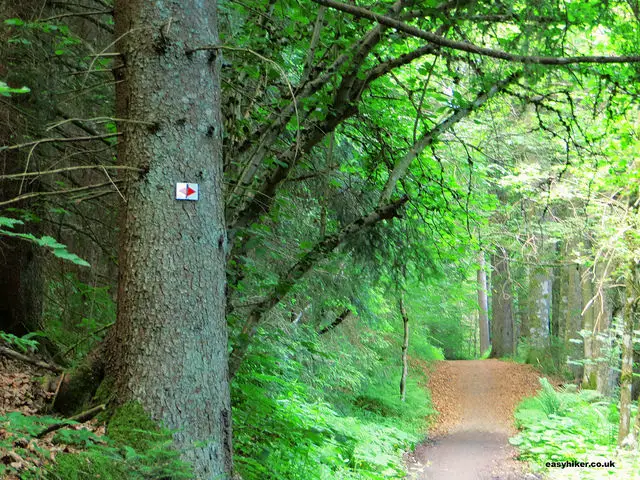
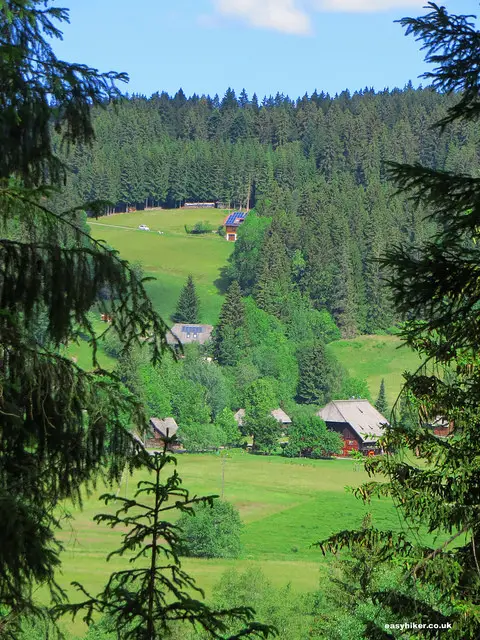
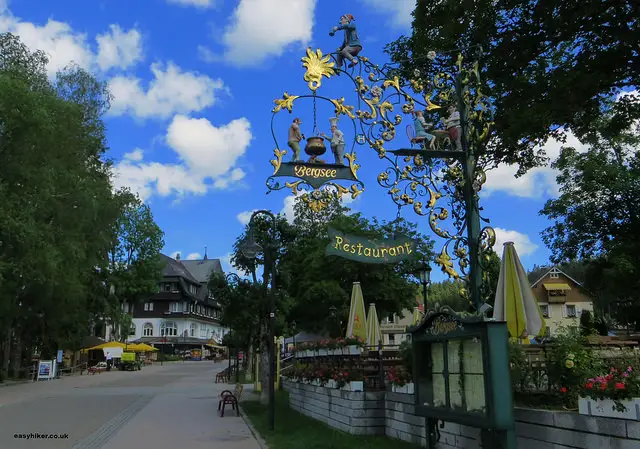

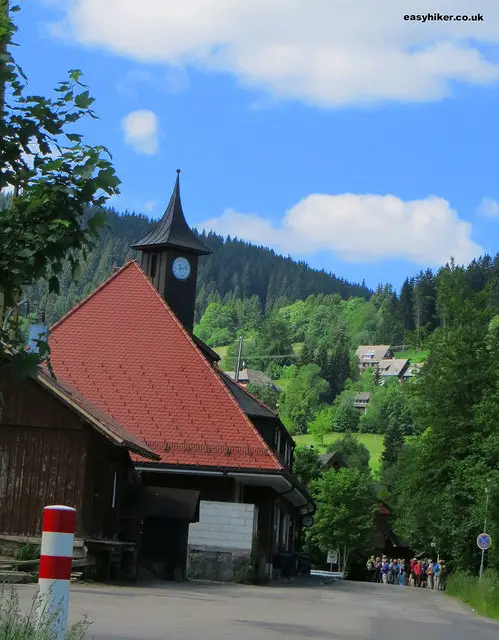



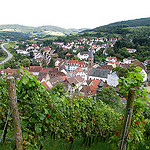
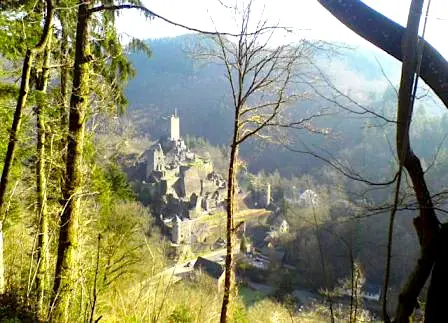
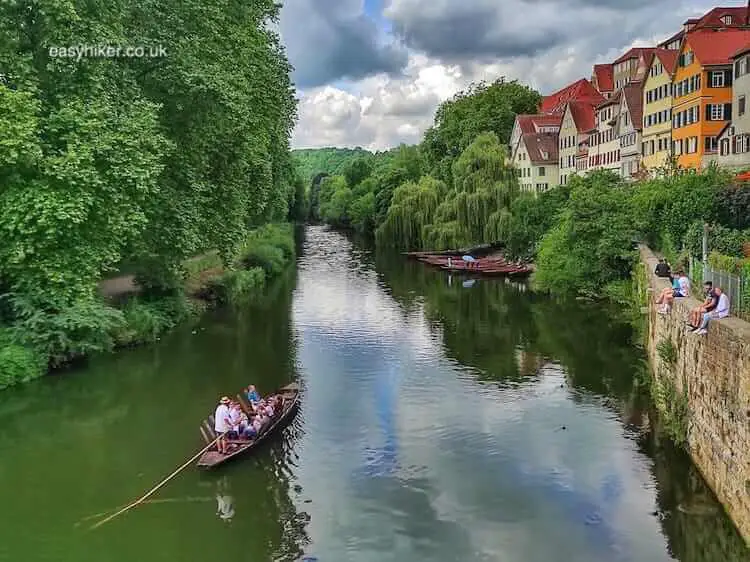
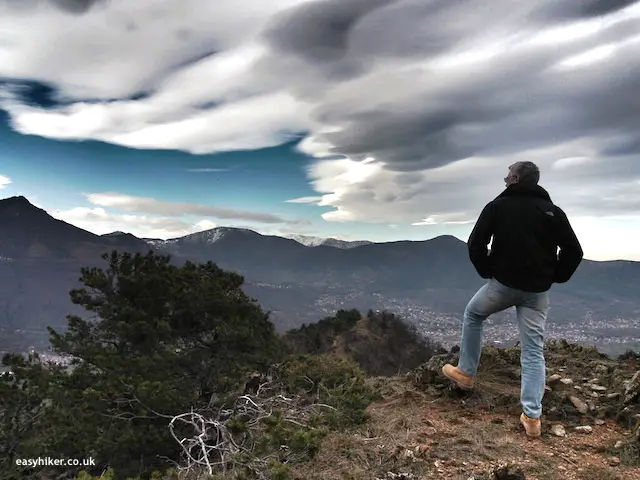
Hi Maria, You can find maps for the western and eastern routes of 9 here http://www.wanderkompass.de/Baden-Wurttemberg/westweg-etappe-9-westliche-route.html and here: html.http://www.wanderkompass.de/Baden-Wurttemberg/westweg-etappe-9-oestliche-route.html.
If you need maps or more information on any other stage, just type Westweg into your search engine and the German word for stage which is “etappe” (plus the number you want). Most of the info is in German, but if you click your way down the list, you are sure to find something useful.
Hi. Do you know where I could find a map of the Westweg’s stage 9 that you mentioned? Thank you!
CeeCee, deep midwinter is indeed not the greatest time for a hike in the Black Forest, although ultimately, everything depends on the specifics. Some winters are harsh, others are mild, and the towns and villages in the Black Forest do not have a thick blanket of snow from Christmas to March in every year.
Some of the trails, of course, particularly the ones around “civilized places” such as Lake Titi, can be done even if there is a little snow and frost on the ground. Anything around the Feldberg, conversely, is pretty much off the menu even in ordinary years unless you are prepared to bring your snow boots.
And, yes, some of the trickier paths may indeed be closed under certain weather conditions. But that’s impossible to predict. Just keep in touch with your local tourism office when you are there – I trust that in Freiburg they will be able to advise you where it is safe to go and where not.
I am sure you will be having a great time, come snow or shine.
Hi….we’re planning to visit Black Forest in early January….Are the short hiking trails for day hikes available and accessible in the winter time or will there generally be snow and off limits….We will have a rental car and we’re planning to stay in Oberkirch and Freiburg….and was hoping to hike around the Triberg Falls….Any suggestions and recommendations would be appreciated since it will be our first time at the Black Forest….
Hello Judie. Generally no. This is true for all of Germany, although the rules are not always strictly enforced, and it would at any rate be difficult to do so – even in a country as well organized as Germany – provided people put up their tents at dusk and continue their hike the following morning.
Please note, however, that all German hiking trails have cabins where you can stay overnight. Caution: they are rather small and consist of little more than four bare walls, so you would always need a mat and a sleeping bag. There are no toilet and washing facilities either.
Youth hostels are generally the best bet for people who want to save on hotel expenses. They are cheap, clean and equipped with all the mod coms. On the downside, it is unlikely that you can find a “family room” on short notice, so expect to share a room with up to 8 strangers.
Hope this helps!
Can you camp in the black forest
An interesting question, Christine. Overall, the trees in the Black Forest are not very old, on average less than one hundred years. This is because most of it is not really a “forest” in the medieval sense of the word (a “natural forest”) but a tree farm, and the tree farmers are of course mainly planting fast-growing trees.
Most forests in Germany, by the way, are much younger than many people think. Until the 19th century, much of Germany looked like a dusty prairie, the product of a tree-cutting economy that had started in the late Middle Ages.
Storms have also done a great deal of damage in the Black Forest. After a particularly heavy storm in the 1990s, some of the devastated forest was not replanted but turned into a nature reserve that is open to the public.This is, in a way, the “newest” rather than the oldest bit of forest, but certainly one of the most interesting sections.
Have a look here if you can read a bit of German. http://www.schwarzwald.com/hochstrasse/lotharpfad.html
I would like to see the oldest part of the Black Forest where the trees are the most ancient. Can you help me find this area?
Hi Naomi,
Thanks for your interest in our blog.
Safety should not be a problem on any trail in the Black Forest. There are always hikers on the trails, particularly in summer, and you will see many other women who are out on their own.
Almost any small town in the Black Forest has a hiking or mountain biking trail near-by, so if you are into picturesque towns, you may want to select the towns first and then see what hiking you can do in the region. There are three main railway lines, tourist attractions in their own right because they have been routed through the most picturesque scenery of the Black Forest: the Schwarzwaldbahn, the Höllentalbahn and the Dreiseenbahn. You may want to check these out because having a base with a railway connection is obviously important.
If you are looking for pretty towns, you may also want to have a look into this website: http://en.wikipedia.org/wiki/German_Timber-Frame_Road. The Black Forest towns on this road are all on the list of “favourite tourist destinations”.
For checking transport connections, always use the website DIE BAHN which also has an English language facility and makes it really easy to find what you want.
Have a great time!
I’m planning to visit the Black Forest this summer for the first time. As a single, female traveler, I’m most concerned about safety. I’d also like to know your recommendations for small towns/villages to visit that have the easiest access to hiking/biking trails. Thanks in advance!
Thanks for this good tip, Sanjay. Will probably check out that app too.
Hi Mandy,
I would prefer Triberg or Donauschingen(where the mighty Danube begins).
Titisee is a nice place too but it is a bit too touristy for my liking but Titisee has relatively better Train connections(I lived for three years in Furtwangen ~ near Triberg and now three train stops away from Titisee).
The German railway (Deutsche Bahn) has a very good app which covers the stations through which the schwarzwaldbahn (Black forest train) passes through
https://play.google.com/store/apps/details?id=net.dittebrand.swb
If you need more suggestions drop me a message, i would be glad to help
regards
Sanjay
Hi Mandy, I don’t know the area around Triberg that well, so cannot really advise you on that, but there are quite a few stations around Freiburg that give you excellent access to various trailheads. There are two railway lines to ferry hikers and tourists to and fro, the Höllentalbahn and the Dreiseenbahn (the “Hell Valley Railway” and the “Three Lakes Railway”), and they can take you to some picturesque lakes and the foot of the Feldberg, Germany’s highest mountain outside the Alps.
From the way it looks, the area around Triberg also has its charms, however, and the Schwarzwaldbahn appears to be equally capable of taking you around.
Bear in mind that there will be buses, too, particularly now that the hiking season has started. In this part of the world, getting around is generally not a huge problem – particularly if you have done your research. Use the website DIE BAHN. There is an English language version, too.
Wherever you go, I am sure you will be having a great time.
We would like to visit Schwarzwald and enjoy the hiking experience here. Due to the time constaint,we would like to find a hiking route which near to the train station. So do you know which station will be the closer and convenient to the hiking start-point. I found several places in Schwarzwald such as Titisee and Triberg. Which place do you suggest us to go? Many thanks!
Make time in your travel schedule to visit Germany, Aleah. You won’t regret it on many levels!
I’ve only been to Germany once, so I haven’t stumbled on any half-forgotten villages. Hope I will someday. Would love to hike this trail!
If you must know, Kristin, the Rheinsteig is my favourite trail. The Black Forest is not bad either.
Looks like it was a nice day hike at least! The photos reminded me a little of my time hiking on the Rheinsteig in the Upper Middle Rhine Valley. I’d love to go back and try out the Westweg one day.
I lived near Switzerland, but I was never in Gruyeres. And I was also in Austria and Southern Germany where I heard Gruss Gott quite often.
Hikers coming across each other on a Schwarzwald trail usually will greet each other Gruss Gott (this being in the Southwest of Germany.)
We just returned from Switzerland where we hiked around city of Gruyeres. Everyone say you “bonjour” in a forest or a field. How about it in Schwarzwald?